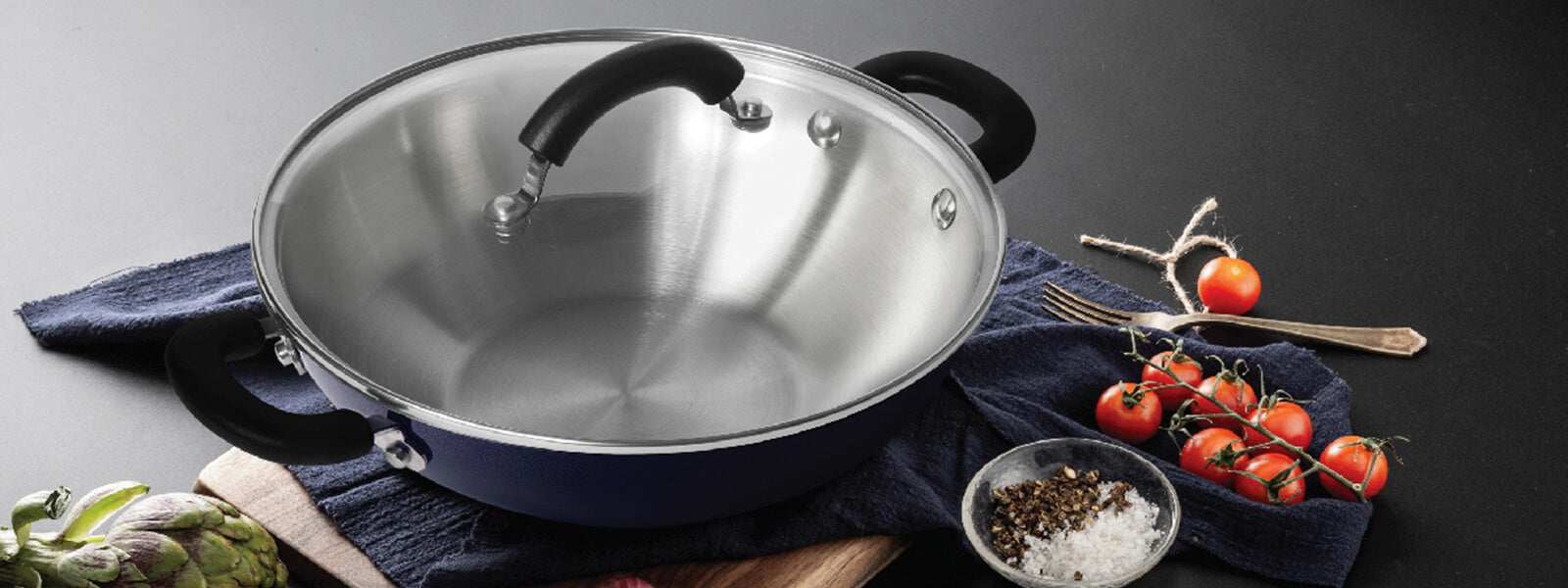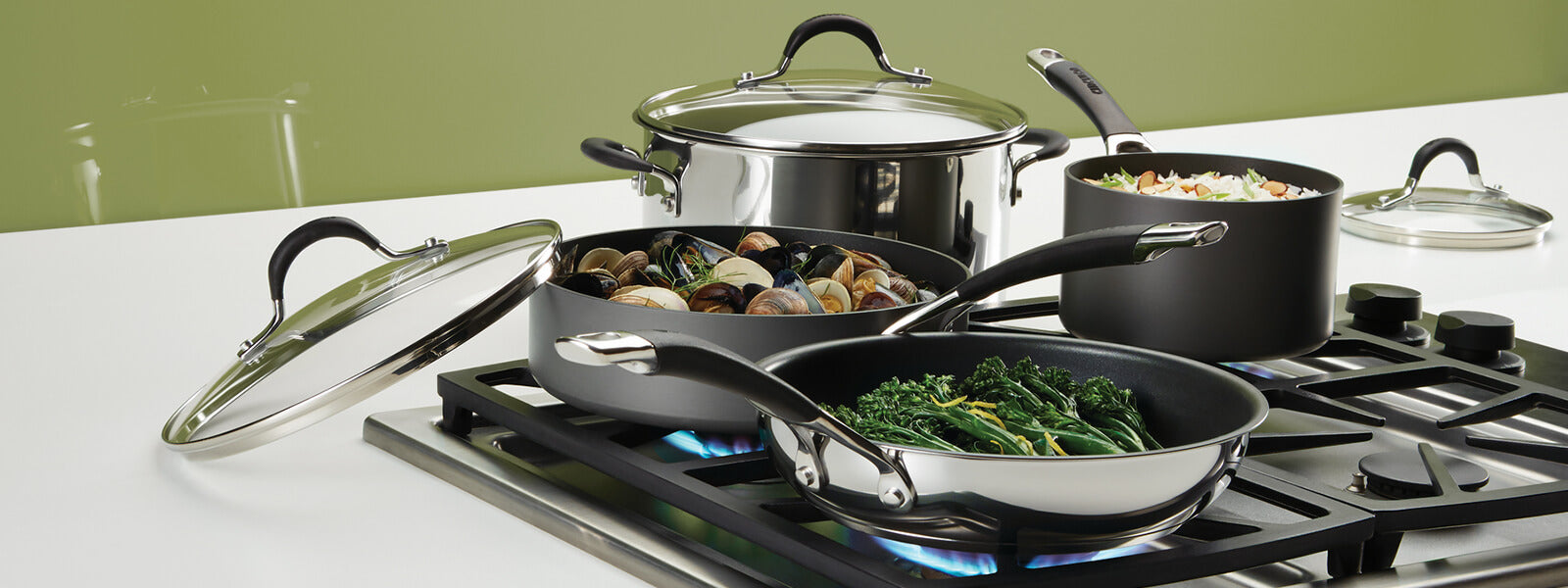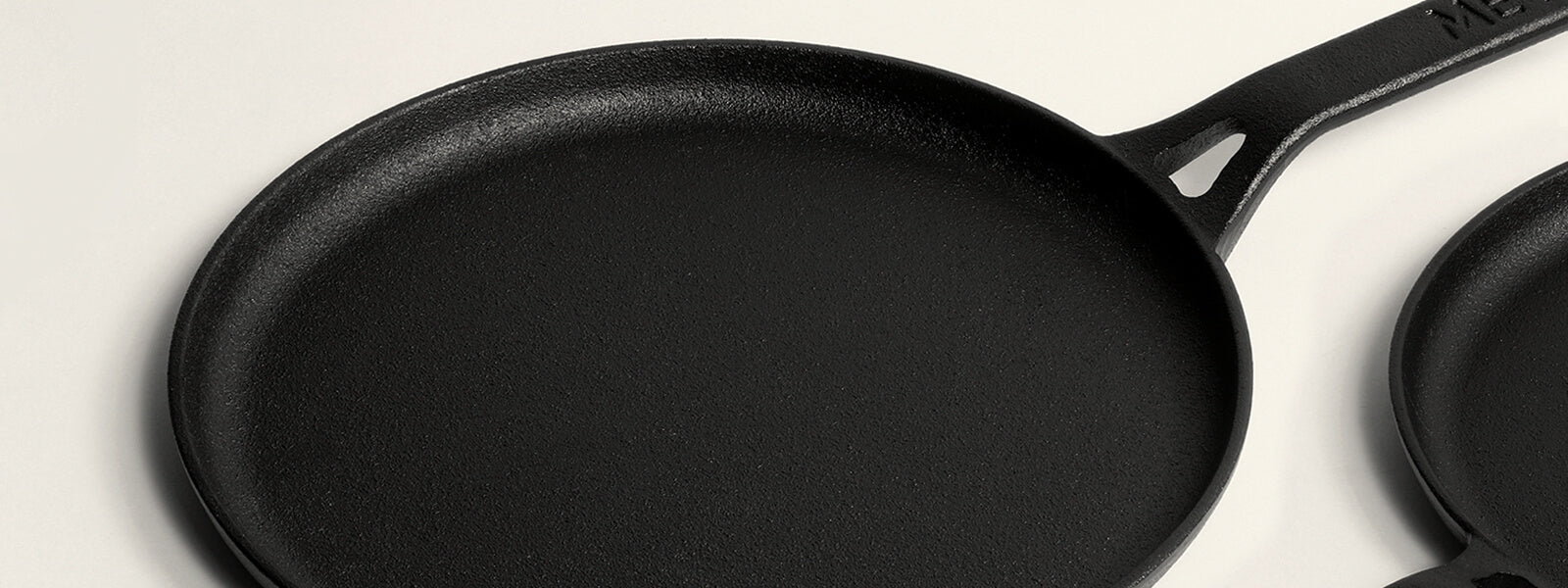To tradition, health and happiness! Let’s go back to our roots and churn out delicacies that have the exotic Indian taste intact with Meyer Cast Iron range. A cast iron cookware can be your alternative to non-stick cookware if you know how to season a cast iron cookware. Because a well-seasoned cast iron cookware acts just like a non-stick cookware. So, whether you are buying the best iron tawa for roti or cast iron kadai with lid, just season it well and often and see it mimicking the excellence of a high-quality non-stick cookware.
However, many are confused about how to season a cast iron pan. They reckon seasoning is a time-consuming and tiresome process. But contrary to doubts and myths, seasoning cast iron is easy. Read on to clear your doubts, amplify your seasoning skill and bust some myths along the way.
How to season cast iron cookware?
| Step 1 | Wash your cookware with warm soapy water, and dry it thoroughly. |
| Step 2 | Rub the entire cookware with cooking oil- inside and out as well as on the handle. |
| Step 3 | Heat the pan on a stovetop until smoking point. Turn off the heat and let it come down to room temperature naturally. |
| Step 4 | Wipe off the excess oil and repeat the first three steps four to five times. |
Now that you know how to season a cast iron skillet and other cookware, here are some points that you need to understand about the whole process.
1. You can use any oil for seasoning: FALSE
Though it is said that you can use any oil for seasoning, this will not produce the same result because some oils give a better patina than others. So, if you want the best result then we suggest you use flaxseed oil to get the best possible nonstick surface. If you don’t want to use flaxseeds oil then the next best thing is vegetable oil.
2. Seasoning can take a lot of time: TRUE
Seasoning a cast iron cookware is a simple but a little time-taking process as it includes coating the cookware with oil, heating it on a stove top or an oven, letting it cool, wiping the excess oil and repeating the whole process as many times as you want. The more you season, the better your patina will turn out to be as during each seasoning the layer of oil gets a little thicker and a little shinier.
3. One day seasoning is enough: FALSE
Seasoning is not a one-time process but a forever thing, just like cleaning. You especially and immediately need to repeat the whole process when the seasoning starts to look dull or if you spot any rust on the surface (but remember to remove the rust first).
4. A little care can do wonder: TRUE
Never put your cast iron cookware in a dishwasher, hand wash it without using soap.
Avoid using steel wool or other abrasive cleaners (unless you plan on re-seasoning). Cast iron should never be soaked in water and should always be dried thoroughly before storing to prevent rusting.
Before you go, here are some frequently asked questions about cast iron cookware:
Q: What is seasoning?
- That hard black layer you see on the surface of a cast iron cookware is called seasoning or patina. Cast Iron is super porous, so the fats fill in the pores and seal the surface to form a dense, hard, dry layer called seasoning. It is the layer that gives the cookware its nonstick properties while also making it rust proof.
Q: Can you use cast iron without seasoning?
- You can if you are ready to use lots and lots of oil because the porous surface of cast iron makes it very sticky.
Q: How often do you need to season a cast iron cookware?
- Whenever it starts to look dull; the more the better; also, don’t forget to rub a thin layer of oil after cleaning your cookware to strengthen the seasoning.
Q: Can you season a cast iron cookware in the oven?
- Yes. Place your cookware in the oven, bake for about 1 hour, then turn off the heat and let the pan remain inside for another 15 minutes. Wear a thick oven mitts and remove the pan and allow it to cool completely.










Leave a comment